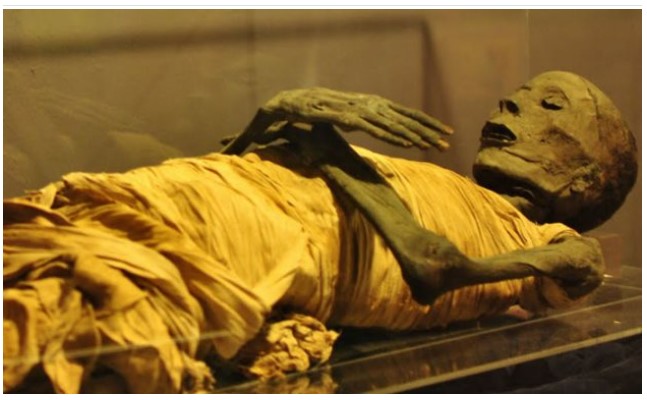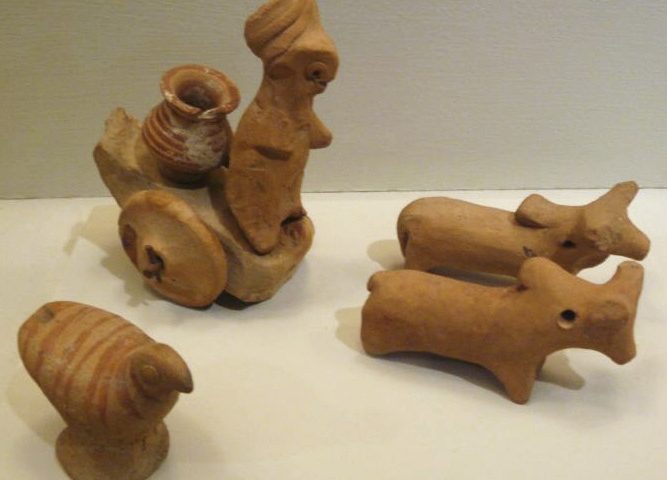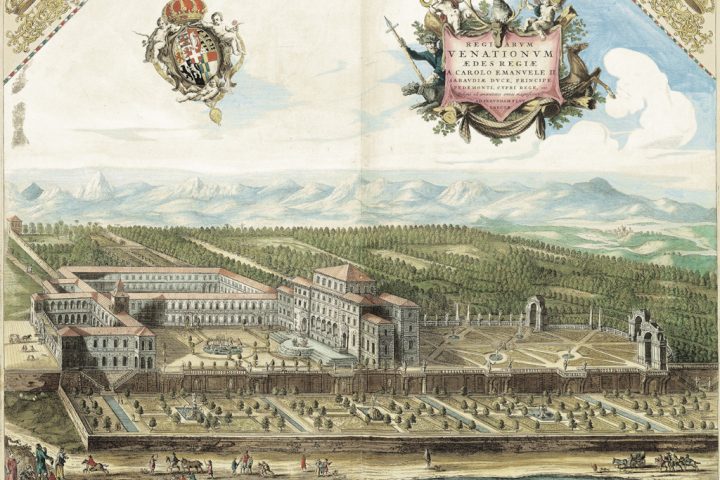Apart from the tall and mighty pyramids, Mummification is another thing that has made Egypt popular in the world. The ancient Egyptians believed in the concept of the afterlife and that the soul of a person embarks on a spiritual journey after death. In order to experience the afterlife, the dead person’s soul would need the body in the spirit world. Hence, mummification became a major practice where the body of a person was preserved using various techniques and tools. They tried to preserve the body as efficiently as they can without disfiguring any part of the body, keeping it intact for the soul to recognize its body in the afterlife.
When a person travels to the other world they would need the necessary things from this life, hence, mummification was done to ensure that the soul would be provided with the stuff they would need in the afterlife. The ancient Egyptians believed that the mummified body was the home of the soul or spirit of the dead person.
What is Mummification?
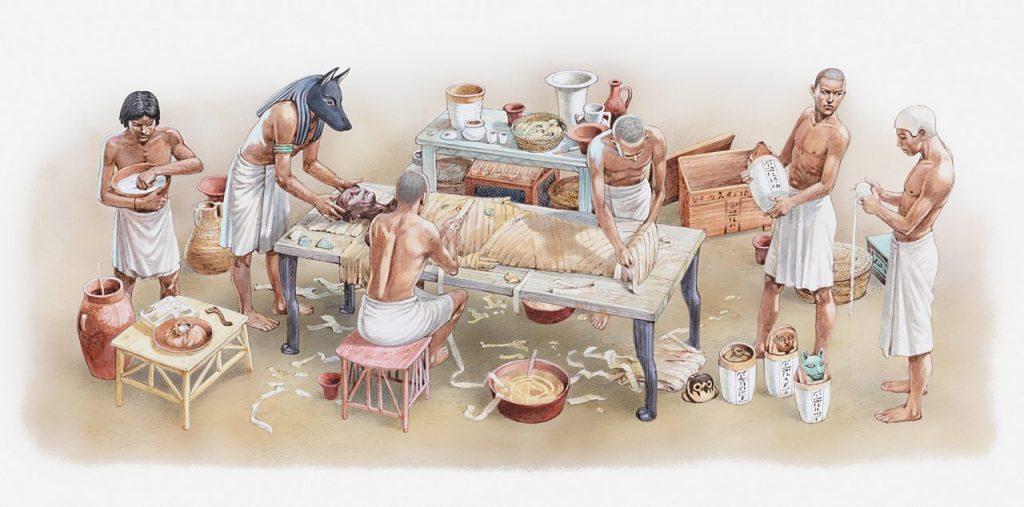
Mummification was derived from an Arabic word called “Mummiya,” which means bitumen which is a substance used in the preservation process during the late period.
The practice of mummification began in Egypt around 2400 B.C to 2600 B.C. This process was a mixture of both science and spirituality where the high priests used various tools and techniques to keep the body intact.
The earliest mummies are from the prehistoric time period and were accidental, dry sand and air worked as the preservatives for the bodies buried deep down in the land.
The method of embalming or treating the body in order to protect it from decaying is called mummification. There were varieties of ingredients used for the preservation which high priests used during the process. The mummification process was a lengthy and time-consuming procedure that took 70 days of time and required proper care.
The high priest took the necessary precautions to protect the body from decaying right from cleaning the body to removing the internal organs from it and so on. Various rituals were performed during the process and prayers were chanted from the book of the dead.
Do you know – not only humans but animals were also mummified? Animals like cats, crocodiles, ibises, etc., were largely mummified in ancient Egypt as they were considered sacred and had great religious value in Egyptian culture.
We have discussed the step-by-step process of mummification in the next segment. So, keep reading.
Process of mummification and tools used in it
The mummies we found today are thousands of years old yet, well-preserved and in good condition. It is the result of outstanding techniques used for mummification.
The New Kingdom (1570 – 1075BCE) is believed to be the finest era of mummification where mummies of many pharaohs like Tutankhamun were preserved using the best techniques and tools.
Let us shed light on the process of mummification which took 70 days and consist of various stages like embalming, cleaning, and wrapping the body.
Step 1 – Removal of internal organs
The high priests also called the embalmers first removed the brain of the corpses with a hook that resembled a crochet needle they inserted through the nostrils. The substance of the brain comes out in liquid form.
After this, the internal organs like the lungs, liver, stomach, and intestines were removed by making incisions in the left side of the abdomen of the cadaver. All these organs were placed in canopic jars of different sizes.
The heart was left untouched inside the body as the ancient Egyptians believed that the heart is the body’s source of intelligence.
After this, the body was rinsed with wine as it helps in killing bacteria and further prevents the body from decaying.
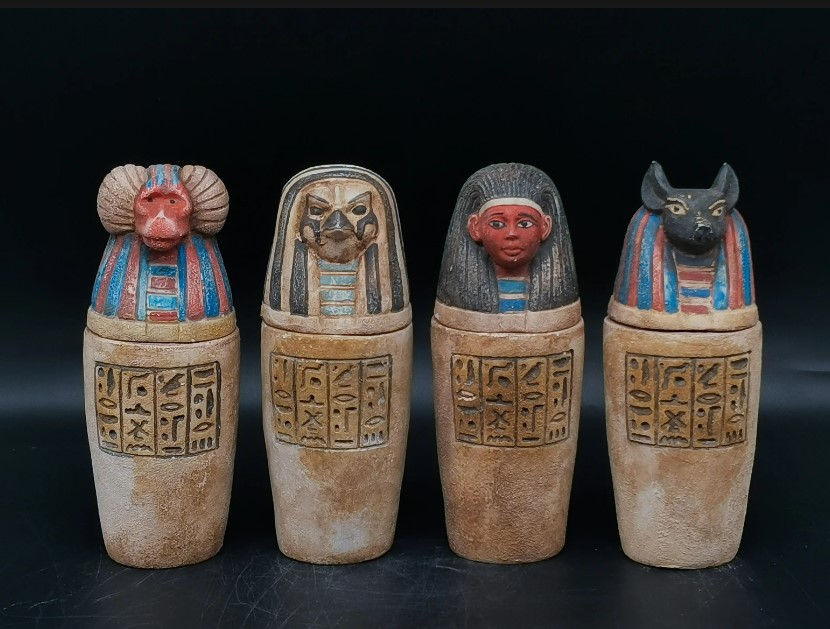
Do you know – That the design of the canopic jars changed over a period of time? By the 18th Dynasty, the jars featured the four sons of Horus, who were each responsible for the protection of a particular organ and were protected by a companion goddess.
Step 2 – Dry the body
Next, the embalmers made sure to remove all the moisture from the body as moisture can lead to decay. To remove the moisture from the body, embalmers used a chemical disinfectant called natron which is a compound of sodium carbonate and sodium bicarbonate.
Corpses were filled with natron bags thoroughly so as to suck out the moisture completely from it. The natron was found in the dried river. The cadavers are fully covered and packed with the natron for 35 to 40 days. After 40 days, the body turns black in color.
Step 3 – Revitalize the body
Now comes the process of restoration where the embalmers try to work on making the body look subtle and as alive as possible. The corpses are given a makeover by massaging the flesh to make it look more lively, they apply blush and paint the false eyes of the cadavers. They are stuffed with padding to make the body look normal.
Step 4 – Wrap the body
Finally, high priests wrap each and every part of the body with multiple layers of linen strips, the ones you must have seen in mummy movies or cartoons. Each body is wrapped in about 100 yards of linen strip.
Step 5 – Bid farewell
Lastly, priests perform a final religious ceremony at the tomb, which involves a ritual called “opening of the mouth,” The high priest touches the different parts of the body with a tool to open those parts in the afterlife. According to Scientific American, Egyptians believed that when a priest touched the tool to a mummy’s mouth, the dead person would then be able to speak and eat in the afterlife. After this, the mummy is placed in the coffin and sealed.
Do you know – the Book of the Dead is a funerary text consisting of a number of magic spells written by many priests over a period of 1000 years? The book helps in assisting the dead person in the journey to the spiritual world or afterlife.
The above process also varies for different people in terms of the money they can afford for mummification. For instance, those who couldn’t afford the luxury of the above process would opt for cheap ways of mummification. In the case of less expensive ones, the internal organs were dissolved by certain oils. Generally, syringes were filled with the oil from the cedar tree and injected into the abdomen of the cadaver.
Do you know that there are certain rituals performed after the death of a person?
Read our article on why people from every culture perform rituals after death.
Mask
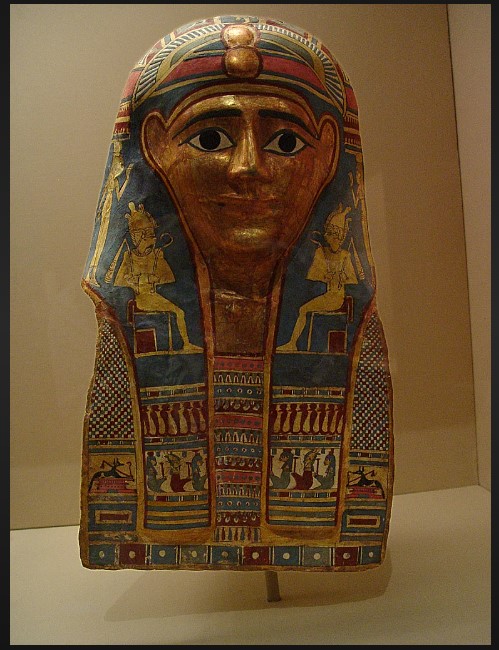
At the beginning of the Middle Kingdom, mummies were provided with masks that covered their heads and shoulders. These masks were made of cartonnage which can be molded as per the shape and size of the face. Cartonnage was made out of a material consisting of waste papyrus or linen soaked in plaster.
These masks were often painted so that the spirit of the deceased person could recognize their face in the afterlife.
Modification in the process of mummification
Today, mummification is rarely practiced, yet there are a few places where bodies are preserved.
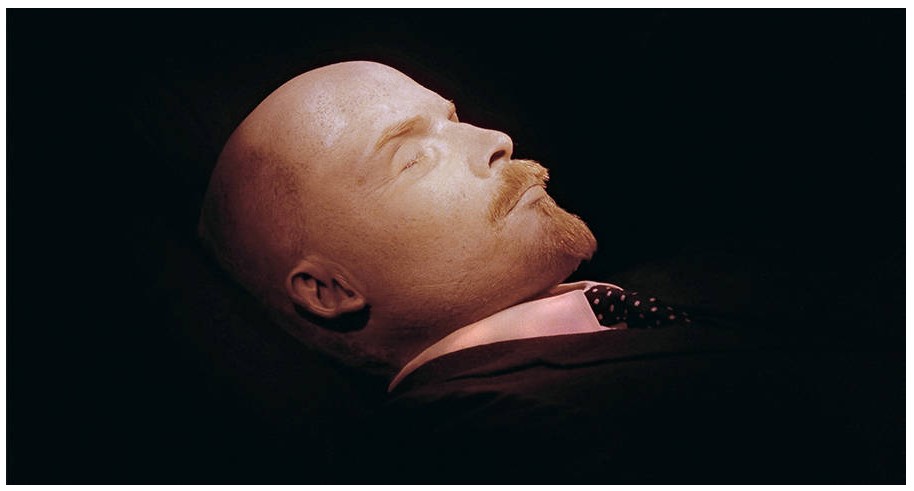
With the modification in technology, the process of mummification has also changed and evolved. One of the best examples of mummification using modern techniques is the mummified body of the communist leader Vladimir Lenin who died in 1924. Nearly a century after his death, Lenin’s body is still displayed at a mausoleum in Moscow.
According to All things interesting, the internal organs of Lenin’s body were removed and embalmed. There is a team of dedicated experts called “Lenin Lab,” maintaining the mummy with precise lighting, temperature, and embalming fluid (a secret mixture).
Who was mummified?
Ancient Egyptians are worldwide famous for their unique rituals and practices which archaeologists to date are working to understand the nature and significance of.
Archaeologists have retained many mummies from different sites in Egypt which are found in the best of conditions. Mummification during ancient Egypt largely depends on one’s status in society. It is believed that during the Old Kingdom, only Pharaohs were mummified as they were considered the head and religious leaders of Egyptians and believed to be able to attain immortality. Pharaohs were said to be the divine intermediary between Gods and Egyptians. Hence, were righteously mummified.
Later on, around 2000 B.C, the views of Egyptian priests and people evolved and everybody was allowed to be mummified. But mummification was expensive and not everybody could afford the luxury of it.
It was not necessary to be mummified but it is regarded as one of the ways of resurrection in the afterlife, hence, people used to opt for it. But because of its expensive nature, only wealthy people could afford it.
Why is mummification essential to ancient Egypt?
The ancient Egyptians believed that the soul is made up of 3 parts – the ka, the ba, and the akh. It was believed that the livings were responsible for helping the dead in their journey into the afterlife. The living one should help those who had gone in making the necessary arrangements for the easy crossing of the spirit.
The ka – It was believed that if a person had a good heart and had done good deeds then his heart would be on balance and pass to the afterlife. The ka was the person’s double which is also the life force and at death, it was separated from the body.
The ba – It is another spiritual entity and a part of the soul that can travel between the worlds of the living and the dead.
The akh – It is a part of the soul that was the transfigured spirit that survived death and mingled with the gods. As per one source, it is believed that the akh was only allowed to the people whose soul was worthy as they lived a good life in the past. The akh were the worthy souls which have been judged by Osiris (God of the Dead) and found maat kheru (justified).
The maat is said to be the goddess of Truth, Justice, and Balance. The deceased would have to go through a final trial where their heart is weighed against the Maat. If a person has lived a good life, then his heart would be in balance and pass to the afterlife. However, if the heart didn’t balance with the maat, then a monster named “The Devourer” will consume the heart.
The heart is believed to be the center of intelligence and emotions, hence is of great importance for the deceased body.
There were many things done for the deceased body for example – their tombs were occasionally filled with loaves of bread, beer, and meat so that the ka can be fed in the afterlife. The tombs would also house shabti (servants) to work on behalf of the ka in the afterlife.
The back of these figurines was inscribed with chapter 6 from the Book of the dead, which states if the owner of the shabti was called upon for any compulsory labor, then the shabti will answer the call and perform the duty instead of the owner.
The tomb would be inscribed with many prayers to help the deceased in the afterlife.
Where were the mummies kept? Tombs and Pyramids
During the early excavation, archaeologists found some of the earliest mummies in the Pyramids. Yes, you read it right, the pyramids you see today were the burial sites of the many mummies. It is believed that the ancient Egyptians used to bury the mummy of Pharaohs or kings in the pyramid as they were considered in high regard same as gods.
Then, the tombs were sealed so that nobody could enter inside. Pyramids were made of different styles such as the step pyramid which looked like a staircase at different levels and the bent pyramid which is bent at the top.
Examples of famous Egyptian mummies
Let us talk about a few of the famous Egyptian mummies found over a course of the period.
Queen Hatshepsut
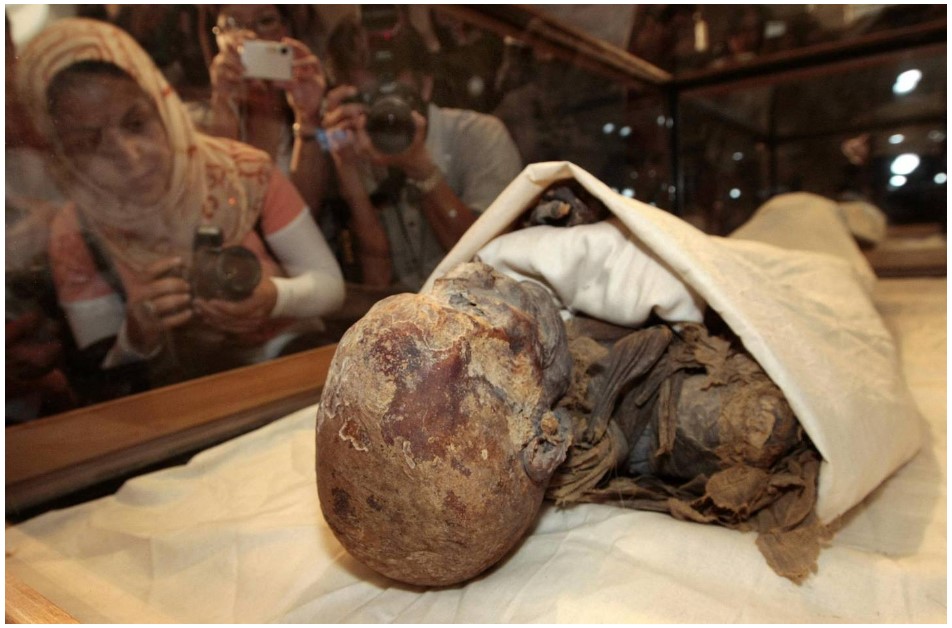
The Mummy of Queen Hatshepsut was founded in 1903 by Howard Carter in the Valley of the Kings. She was one of the first female pharaohs and the fifth pharaoh of the eighteenth dynasty born in 1507 B.C and died in 1458 BC. It is believed that she ruled longer than any other female pharaohs ruled before her like Niethotep, Queen Merneith, Nimaethap, and Sobekneferu.
King Tutankhamun
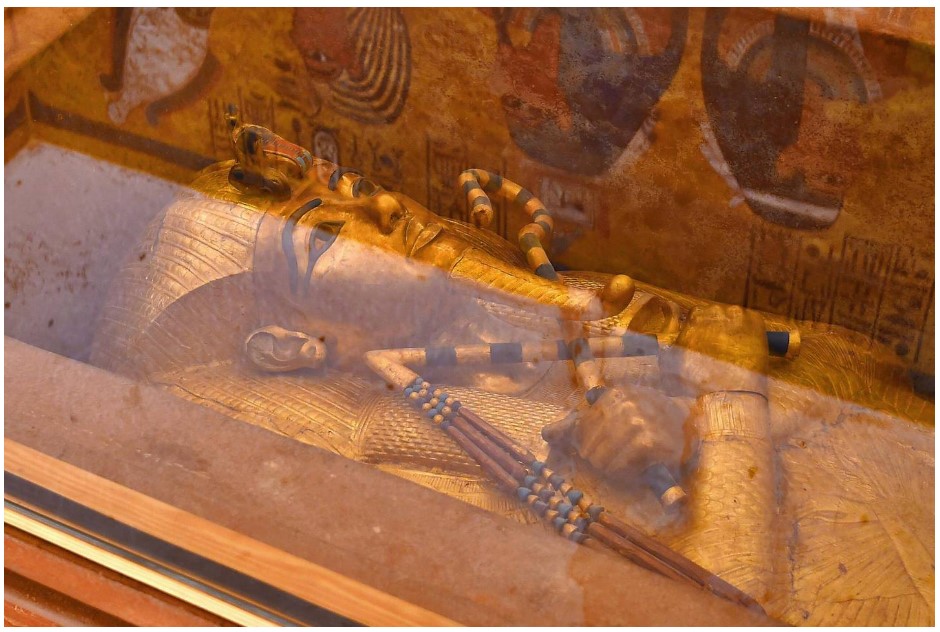
He was born in 1341 and died in 1323 BC at the very young age of 18. He was the last Pharoah of the royal family to rule during the end of the eighteenth dynasty. Tutankhamun’s mummy was discovered by English Egyptologist Howard Carter and his team on October 28, 1925, in Egypt’s Valley of the Kings.
Ramesses II
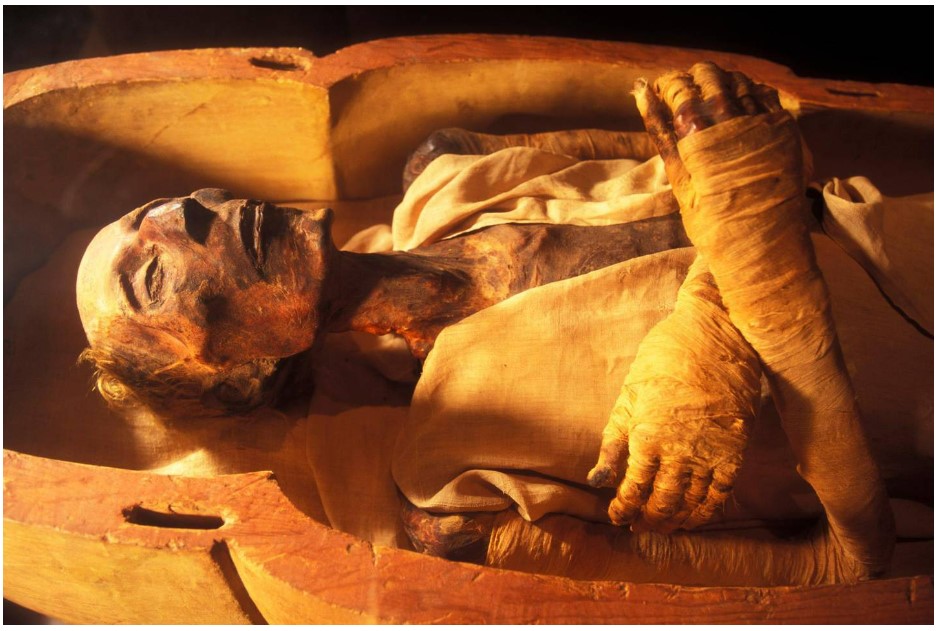
Ramesses II was born in 1303 BC and died in 1213 BC, he reigned for almost 60 years. During his reign, he commissioned the construction of many cities, monuments, and temples. His mummy was discovered in 1881 in the Valley of the Kings.
Mummies are proof of the ancient Egyptian’s faith and belief in the afterlife. The condition of the mummies reveals a lot of the knowledge that the bygone era possessed. By conducting various studies on the mummies we can take a sneak peek into the past and learn about the culture and lifestyle of the ancient people. we also get the chance to learn about the resources, tools, and techniques used during mummification.
You might also like:-

